Even prior to landing in Hong Kong, I knew what I wanted to eat – dim sum! There are a few dim sum places in Paris, some better than others, but I miss those that I get in Asia which somehow always tastes better and comes in more variety. I know, this could just be the biased Asian in me speaking. ;)

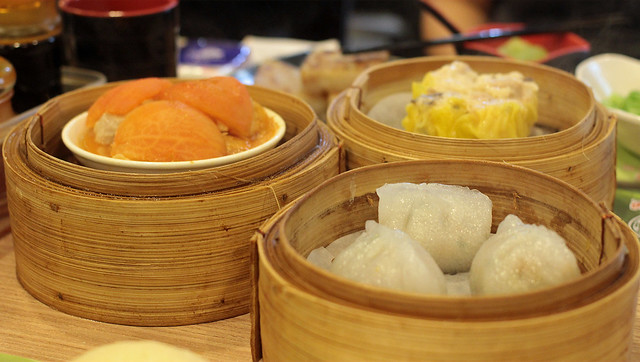
Four of my six lunches in Hong Kong constituted of just dim sum. The first among them was at a small place called Ding Dim in the Central district, and we were so glad to dig in our food that not even a single photo was taken. Two of the next three dim sum restaurants I went to were noticeably packed with Asians and barely a couple of token Caucasians. If they were, I’d hazard there have been a lot of cart peeking and dish pointing instead of ordering, unless they are long term residents in Hong Kong. Fun times!
Continue reading »
Growing up, I’ve seen enough TVB dramas to have an idea of what Hong Kong is like. In fact, it was thanks to these series that I learned Cantonese; daily lesson, every weekday evening, seated next to my greatgrandparents and glued to the latest riveting tales of love and rivalry. The actors and actresses were pretty much the same from one drama to another, so even a child could pointed out right from the first episode that who was likely to be the nice guy and who the bad one. ;)
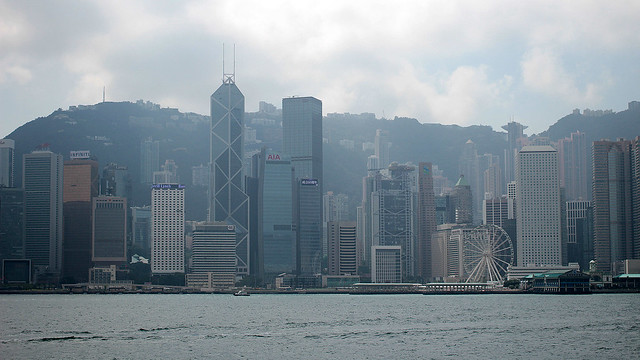
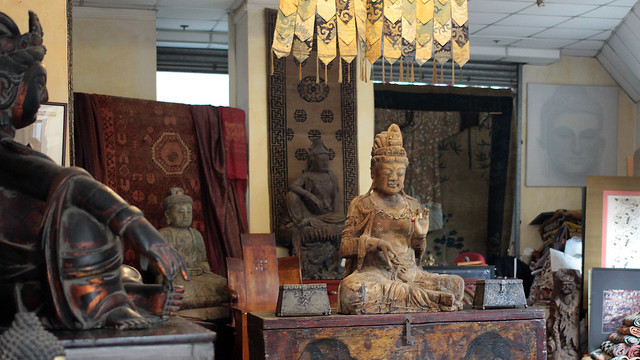
Still, it is very different to experience Hong Kong in person. Somehow, in my head, it is geographically a single main island surrounded by a handful small ones. Imagine my surprise to find Hong Kong island actually constitutes of a small part of the Special Administrative Region (SAR) and a large part of it attached to the mainland China. It is also a lot bigger than I had envisaged. I was in Hong Kong for six days and I barely covered the grounds around Central, Kowloon and Lantau Island. I’d love some time to go out to Yuen Long, or to Sai Kung, or even trek the Dragon’s Back trail.
Continue reading »
Hong Kong is located just across the border from Shenzhen. It was also the perfect location for me to recharge after a very intense work period: I could visit SL who lives in Hong Kong (ahem, mooch a free bed for the trip), satisfy my craving for great Asian food (dim sum!), and sightsee a little in a region that I know very little about.
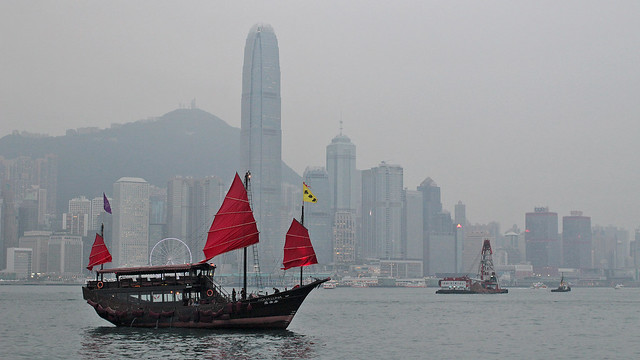
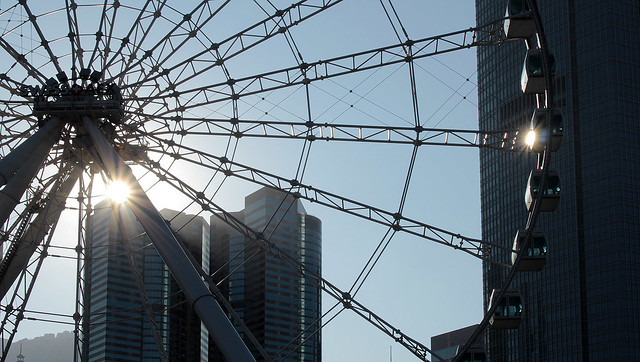
The trouble was, I did not have much time to research what I could do in Hong Kong either. Before leaving, WL helped identify a few key things to, and once in Hong Kong, I am grateful for SL who came to my rescue. She made a list of places we must eat in, suggested places to visit, and even took time off work to play guide a couple of the days. If you know how preciously few paid holidays there are in Asia, you know how significant such an effort is. She is the hostess with the mostest!
Continue reading »
Unlike many of my friends, I have never lived in Kuala Lumpur, neither to study nor to work. Instead, it becomes a pitstop each time I travel back to Malaysia, mostly because my flights arrive and depart from KLIA, and usually I’d organise to see my friends in the couple of days leading to my departure.
Trying to show F around was therefore not a particularly easy task, since my knowledge of the city is rather limited. Armed with a good map, we managed to get around the historical centre of KL, taking in a few classic sites and walked the streets whenever it wasn’t raining. Oh yeah, they seemed to be heavy downpour for 2-3 hours each of the few days we were there, which curtailed some of our planned sightseeing.
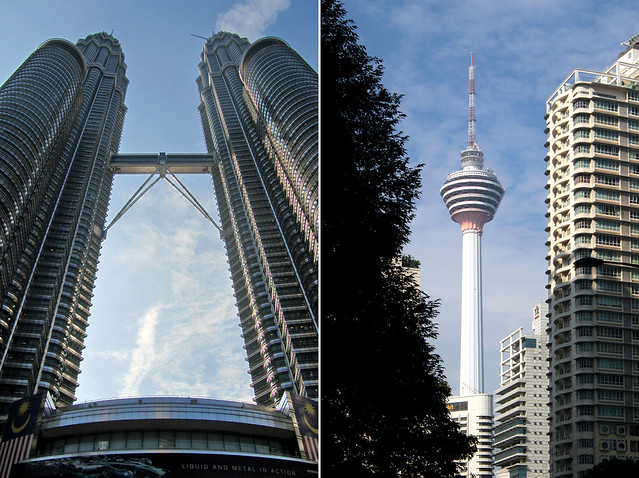

Continue reading »
F and I visited quite a number of Hindu temples while in Bali, so it was rather interesting to contrast those with the Hindu temples that we typically see in Malaysia. Not only are they architecturally dissimilar, the customs and practices of the devotees also bear differences. Since we saw the Mother Temple of Besakih in Bali, it was apt that we picked Batu Caves as its counter comparison.
Batu Caves is famed for the annual celebration of Thaipusam, taking place early in the year (January/February) to mark the gifting of a vel (spear) by Parvati, the wife of Shiva, to her son Murugan, created by Shiva from the flame of his eye of wisdom. It was this vel that was ultimately used by Murugan to emerge as victor against Soorapadam, an asura who was terrorising the devas. On Thaipusam, devotees from all over Malaysia, following a strict period of cleansing, fasting and preparation, begin a pilgrimage of kavadi bearing. A kavadi is a burden bore by the devotees to be offered to the deity in exchange for good tiding and/or aversion of serious trial and tribulation. It is an absolutely fascinating festival to observe.
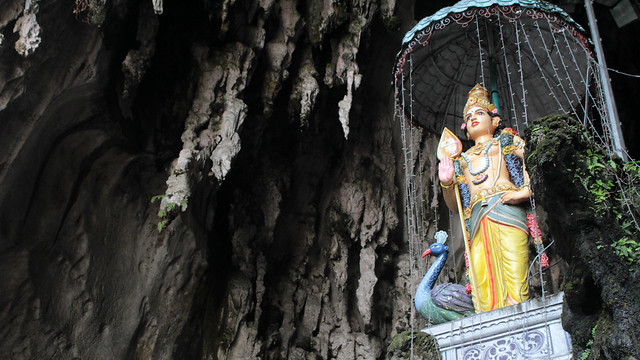
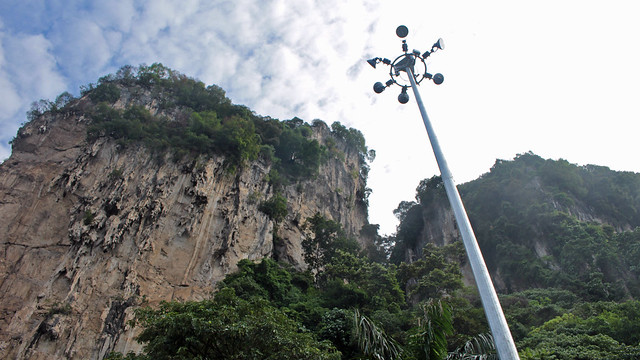
Continue reading »
If you talk to F about my hometown, he’ll tell you right away that there is not much there. And he’s right. Here, you either work, eat, shop or sembang (chit chat); there is a distinct lack of interesting attractions and activities when you’re used to the kind of variety found in many European towns of similar size. Still, for me, it’s home, and I’ll happily stay for a spell without having much to do except searching for the next best eat. For a small town, it kinda rocks that way – outsiders come here for delicious snacks and meals.
Perhaps the most “exciting” thing one can do is to visit the nearby Pangkor Island, an island inhabited primarily by a thriving fishing community but in parts have been developed for tourism. It is a short ferry ride over from Marina Island or Lumut (this takes a wee bit longer) and once arrived, there is no shortage of shocking pink taxi-vans in waiting to take you on a 2-hour island tour.
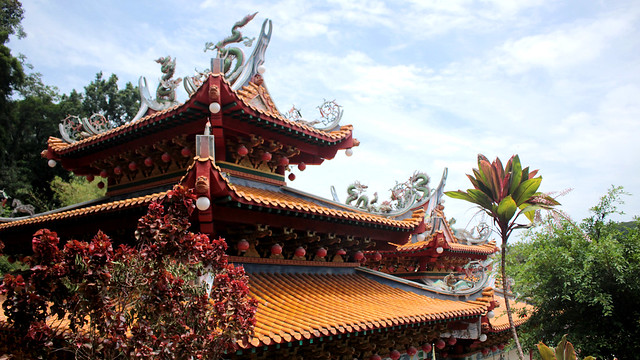

Continue reading »
The Temple of Supreme Bliss, or Kek Lok Si as it is known based on Fujian dialect (the most prominent dialect in Penang) pronounciation, is the most celebrated and largest Buddhist temple in Malaysia. Sitting atop the hill and overlooking Ayer Itam, it is said to be auspiciously located and feng shui-approved to protect the well-being of the temple and its devotees.
Constructed in 1893 under the direction of a well-supported head monk of the Kuan Yin Temple i.e. Temple of the Goddess of Mercy, from local consuls to the Chinese Emperor Guangxu, Kek Lok Si incorporates motifs of Buddhism from Burma, Thailand and China – a nod to both major branches of Buddhism: Mahayana and Theravada. (Note: ask most Chinese Buddhist and they’ll have a hard time telling you which branch of Buddhism they are followers of, in part due to the integration of Taoism to muddle up the mix further.)
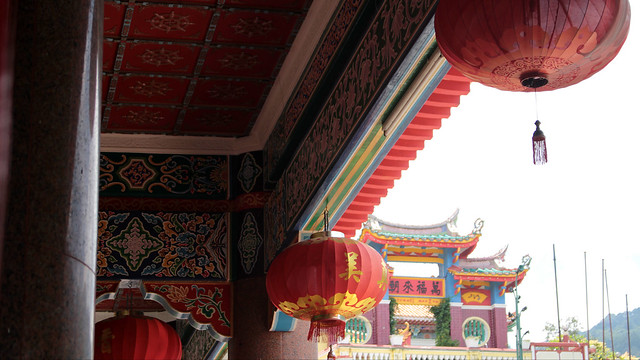
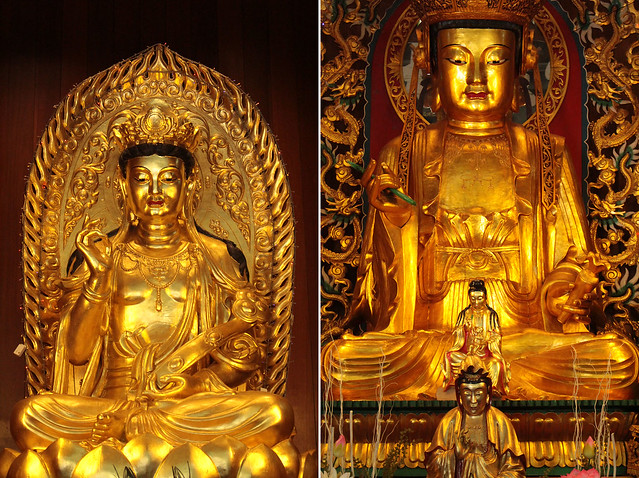
Continue reading »
Balinese culture is steeped in spirituality, and therefore it is not a surprise that there are tens of thousand Hindu temples all over the island. Bali is, afterall, “the Island of a Thousand Puras”. Some of the temples are small and territorial, located within private compounds (usually among the wealthier clans) or local community-based (each village has at least 3, known as kahyangan tiga), while the larger public temple complexes are revelled by Balinese near and afar, and they are also among the most visited by non-Balinese.
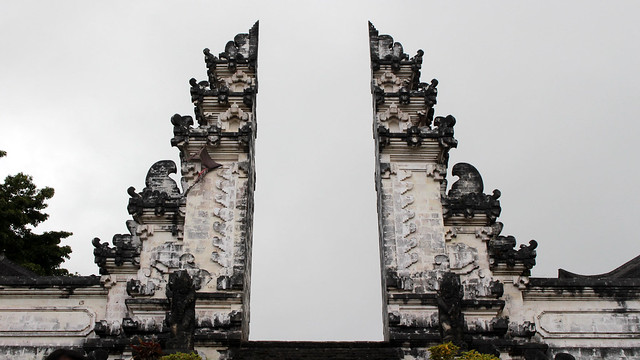
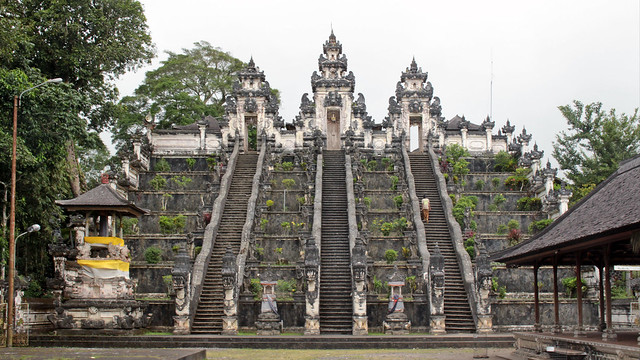
Continue reading »
Our ultimate destination in East Bali was Amed, the name of a village but synonymously used to refer to a number of other villages within the same coastal stretch. Normally a solid three hours drive away from Kuta, we broke the journey down a little by making a few short stops along the way. We made it to Masceti Beach and Candidasa in the morning, before tracking down Bali Asli for lunch and the subsequent visit to Tirta Gangga.
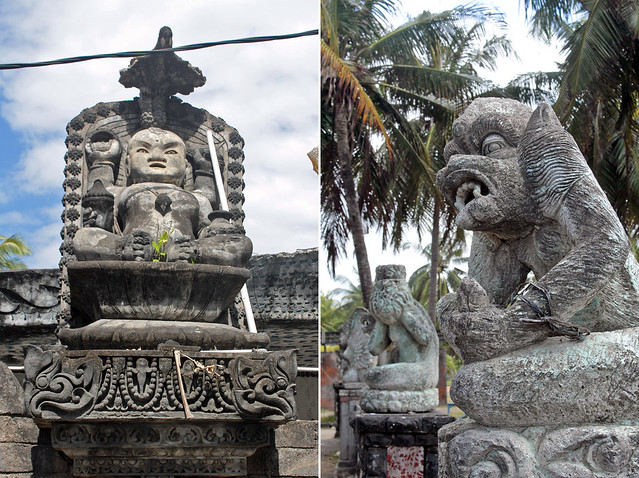

Continue reading »
We kickstarted our (East) Balinese cultural education not with a visit to one of the many temples; instead we went for a walk at the Water Palace of Tirta Gangga. The “Blessed water from the Ganges” is a beautiful complex which incorporates fountains (the centrepiece is an eleven tiered fountain), pools (for swimming, with water from its natural spring), ponds (for lily and koi), stone carvings, statues and a small temple among its lush and meticulously-kept gardens.
The water palace is not very old, built only in the late 1940s by the last King of Karangasem. Following damages caused by the 1963 eruption of Mount Agung, it was rebuilt and restored to its present form, and has been well-maintained since. For visitors who would like to dine with a view, restaurants with balconies adjacent to the water palace offer a premium view and presumably with a premium price tag too.
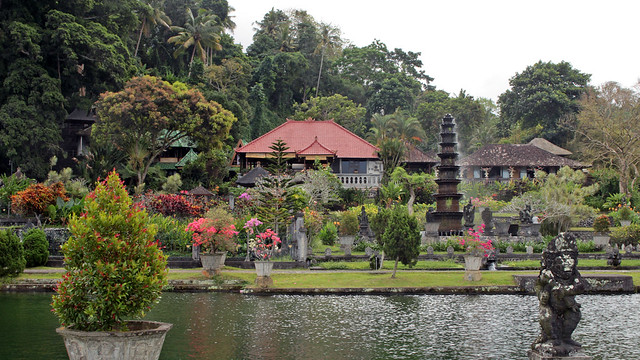
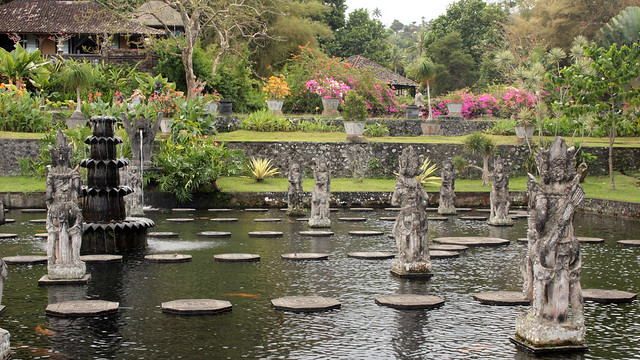
Continue reading »
































